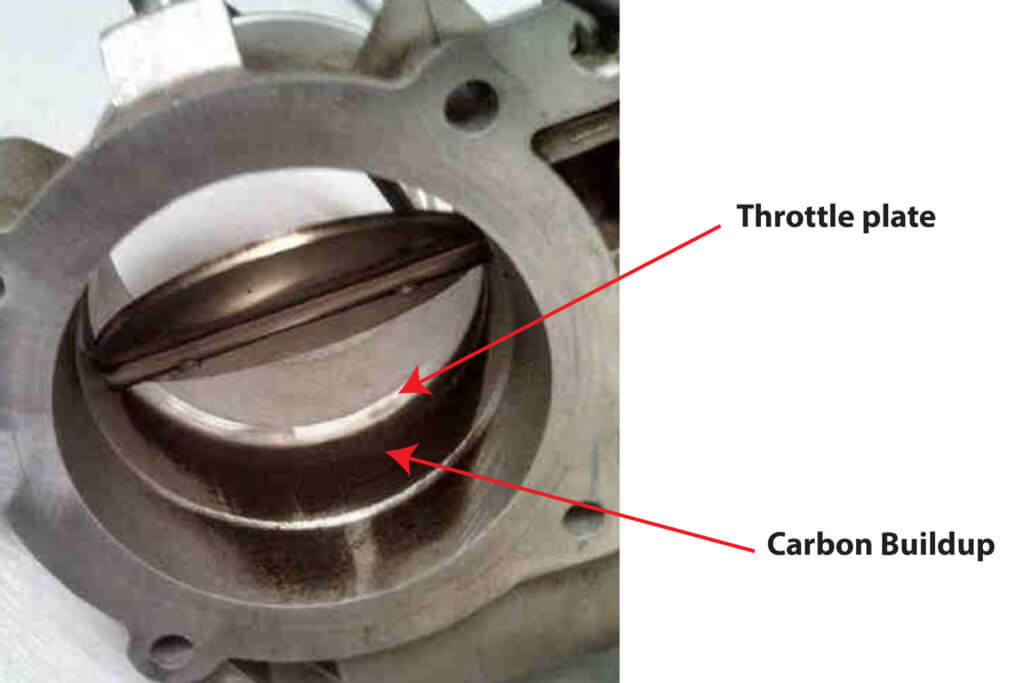VW P0106
Diagnose and fix VW P0106
Shops are reporting a high incidence of VW P0106 trouble codes. And VW has issued a service bulletin 24-18-02 to address a VW P0106 or P3078 trouble code on the vehicles listed below. P0106 is Manifold Abs. Pressure or Bar. Pressure Range/Performance and P3078 is Throttle Valve Control Module Air Flow at idle too Low.
Vehicles affected by VW service bulletin 24-18-02
2008-2009 Rabbit 2.5L (CBTA, CBUA) l
2008-2014 Jetta, Jetta SportWagen 2.5L (CBTA, CBUA) l
2010-2014 Golf 2.5L (CBTA, CBUA) l
2008-2014 Beetle, Beetle Convertible 2.5L (CBTA, CBUA) l
2012-2014 Passat 2.5L (CBTA, CBUA) l
Cause of VW P0106
The VW P0106 code is usually caused  by carbon buildup on the throttle body but the carbon buildup can be caused by a faulty PCV valve that allows excess oil to pool in the intake manifold which then damages the MAP sensor. Do NOT make the rookie mistake of automatically replacing the MAP sensor because this may be a simple case of carbon buildup inside the throttle body.
by carbon buildup on the throttle body but the carbon buildup can be caused by a faulty PCV valve that allows excess oil to pool in the intake manifold which then damages the MAP sensor. Do NOT make the rookie mistake of automatically replacing the MAP sensor because this may be a simple case of carbon buildup inside the throttle body.
Diagnose root cause of VW P0106
Remove the air intake duct from the air filter.
Manually open the throttle plate and check for carbon buildup
Next, shine a light into the intake manifold and check for standing oil. If you see standing oil, you’ve got a problem with the positive crankcase ventilation system—see below.
If there’s no standing oil, remove the throttle body from the intake (you’ll have to buy a new throttle body gasket) and clean the carbon buildup using a rag and spray throttle body cleaner. DO NOT SPRAY the throttle body cleaner directly onto the throttle plate shaft. The spray can seep into the electronics and damage the throttle body. Always use a rag.
Reinstall the cleaned throttle body. Clear the code and test drive.
If you find oil in the intake
The crankcase ventilation system is designed to remove blowby gasses from the crankcase and route them back into the intake to burn with the air/fuel mixture. The ventilation system on these engines is designed to separate out any oil vapors from the blowby gasses. When the oil separation system fails, oil doesn’t get separated from the blowby and it settles at the bottom of the intake. The MAP sensor is located at a low spot and oil can enter the sensor, causing it to fail.
Remove the vacuum line from the MAP sensor and check for the presence of oil. If you find oil, replace the MAP sensor. But you’re not done yet. Perform the following test on the ventilation system
With the engine OFF, disconnect the hose running from the engine to the intake manifold
Blow into the hose. You should notice air resistance. If so, then the check valve is operating properly. If there’s no air resistance, the check valve has failed. Replace the PCV valve
Next, with the engine running, disconnect the hose from the valve cover and plug it.
If the idle quality improves, replace the PCV valve.
Remove the dipstick while the engine is running. If the idle quality improves, replace the PCV valve
Remove the oil filler cap from the valve cover with the engine running
Hold a piece of cardboard over the opening. The engine should suck the paper onto the opening. perly.
If the engine fails the ventilation test, replace the PCV valve. VW may or may not sell the valve as a separate part. In some cases you may have to replace the entire valve cover to fix the problem.
After replacing the PCV valve
Make sure you clean the oil from the intake. Then replace the MAP sensor.
©, 2019 Rick Muscoplat
Posted on by Rick Muscoplat